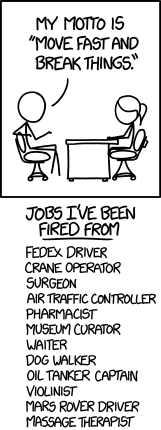Once upon a time, there was a lead developer called Annabel. She worked for vakation.com, a travel booking site on the Internet. She was the tech lead of the devops team that maintained the web-app front-end. Springtime was upon the land, for ‘twas April, a busy time, when people were starting to book their summer holidays. But sales were disappointing. Conversion of visits into actual bookings were getting worse and worse.
One morning Ramon, the team’s business owner, requested an urgent gathering: they had found one of the root causes of the problem that was plaguing them. “Our site does not show visitors whether the accommodations they are booking have facilities to cast streaming media from their phones to the TV in the room,” he said, with a frown on his face. “It turns out that many of our competitors now do show that information, and clients end up booking their travel on other sites. So we need to add the media casting info to the vakation.com website with great speed and utmost alacrity!”
Annabel turned to Edwin, who headed up the hotel reservation back-end system, and asked Edwin whether the media casting info was available in the back-end system. Edwin smiled, for he had good news: the latest hotel booking communication standard included the media casting information! It was already present in their accommodations database. Vakation.com used an Enterprise Service Bus (ESB) to connect the various systems in their landscape, so Annabel asked Edwin to expose the desired info on the ESB for the web-app front-end to display. Seeing Annabel’s look of joyful expectation on her face, Edwin was happy to oblige. But things were not as merry as they seemed – for at that time, Edwin’s team had quite a full backlog: it looked like they wouldn’t have time for the change until June.
Now Annabel started to get worried: fearing Ramon’s wrath, she didn’t want to go back to him and tell him that she wouldn’t be able to fix the website until June. But she soon cheered up, for due to a stroke of fortune, the web-app fornt-end was on the same physical database as the hotel reservation back-end system, and Annabel’s team of diligent developers knew the table structure. So Annabel decided to temporarily ignore the company’s ESB policy and obtain the media casting information directly from the accommodations database, taking on some technical debt. Her mind was firmly set on refactoring the temporary fix as soon as the info was exposed on the ESB, hopefully in June.

Two months went by, after which Edwin perused his backlog, and lo and behold: he spotted the story card with Annabel’s request. With some trepidation in his heart, he visited Annabel in her lair, and asked her: “Fair Annabel, is this story still needed? Some other, more urgent stories have popped up. Would it be terrible if we pushed back the media casting story a few more sprints? After all, things are working now and nobody is complaining”. Failing to reach agreement, Edwin and Annabel decided to ask Ramon, the product’s business owner. But it turned out Ramon had trouble remembering that the fix was temporary, and was not at all interested in prioritizing the refactoring.
Days, weeks and months passed by. Eventually, it took until November before the info was finally accessible through the ESB. In the meantime, it turned out that some new members of Annabel’s team had been copying the method of accessing data in the hotel reservation system directly. Having run into Annabel’s temporary fix in the code, they felt comfortable using the same method – this time without even asking Edwin’s team. The cursed technical debt had multiplied itself! This had already led to the website breaking down after Edwin’s team had made some changes to their table structure, unaware that it was accessed directly by other teams. These outages had caused Ramon to wax angry and scold both teams: “Why did you allow things to become so bad? You should have managed that better!”
As we close the magical book on this horror story, there are some questions we may ask ourselves:
- Was Annabel’s temporary fix to access Edwin’s team’s database directly a wise decision? After all, the company would have lost a lot of revenue if she had waited two months and made the fix the “right way”.
- What about Edwin’s decision to postpone the exposure of the media casting data on the ESB? Doesn’t it make sense to prioritize by business value?
- Was Ramon right to be upset with the teams? After all, he was completely uninterested in fixing the shortcut when it didn’t cause any problems yet.
- Code scanning tools like SonarCube claim to detect tecnical debt, but would such tools have flagged this temporary fix as technical debt?
- What could Annabel, Edwin and Ramon have done to prevent the problems?
I look forward to reading your answers! Join the discussion on https://www.linkedin.com/pulse/technical-debt-fairy-tale-eltjo-poort/












 Michael Keeling then presented a very practical (as always)
Michael Keeling then presented a very practical (as always)  Inspiration
Inspiration